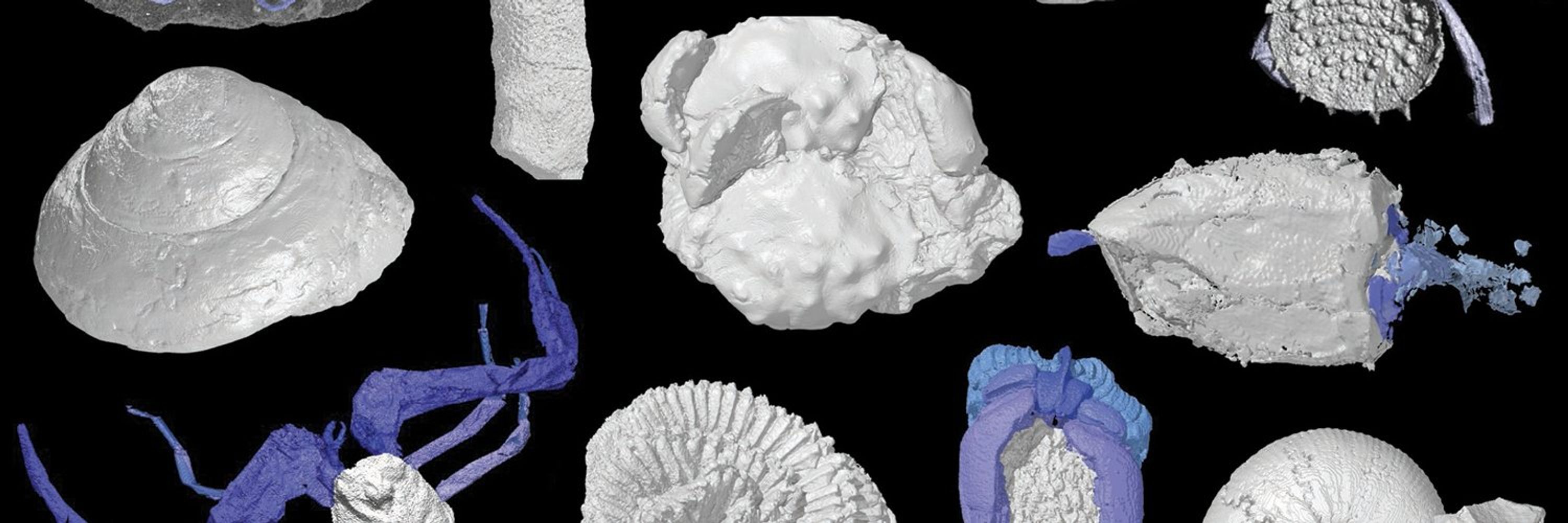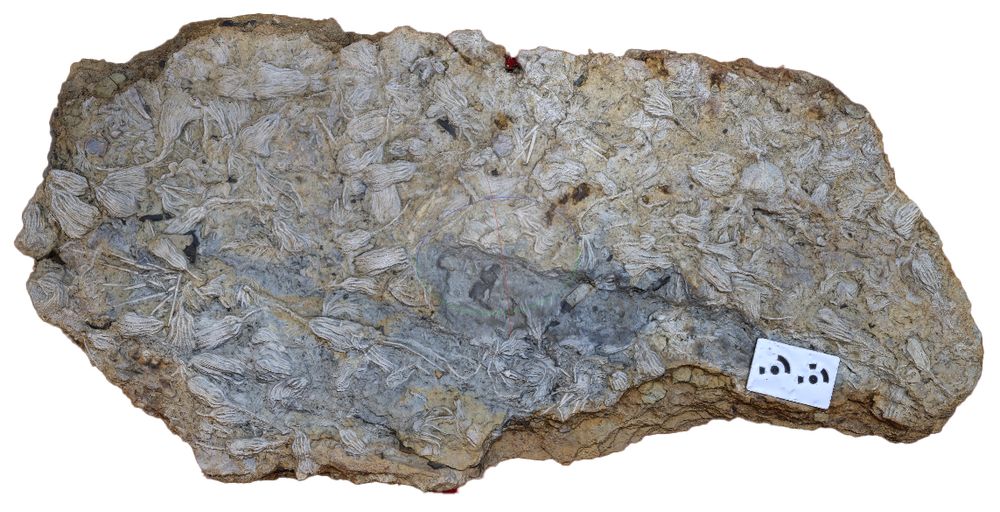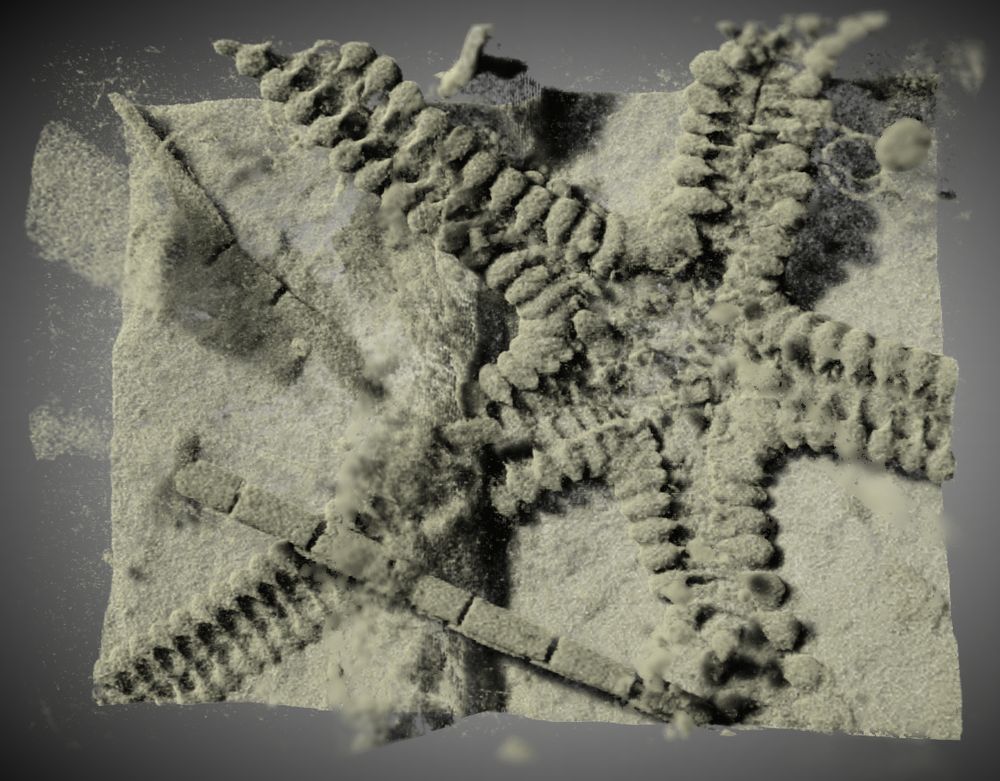
Imran Rahman
@imranrahman.bsky.social
Palaeobiologist | Principal Researcher @nhm-london.bsky.social | Editor-in-Chief @journalsystpal.bsky.social | Honorary Associate @morethanadodo.bsky.social | he/him
https://www.nhm.ac.uk/our-science/departments-and-staff/staff-directory/imran-rahman.html
https://www.nhm.ac.uk/our-science/departments-and-staff/staff-directory/imran-rahman.html
By integrating our results with developmental data, we propose a new hypothesis for the early evolution of the echinoderm anteroposterior axis. This allows us to reconstruct how the pentaradial body plan of living echinoderms like starfish evolved from a bilaterally symmetrical ancestor.

June 26, 2025 at 8:41 AM
By integrating our results with developmental data, we propose a new hypothesis for the early evolution of the echinoderm anteroposterior axis. This allows us to reconstruct how the pentaradial body plan of living echinoderms like starfish evolved from a bilaterally symmetrical ancestor.
Our phylogenetic analyses place Atlascystis and other non-pentaradial fossil taxa as stem-group echinoderms, revealing the evolution of the phylum through successive bilateral, asymmetrical, triradial & pentaradial stages.

June 26, 2025 at 8:34 AM
Our phylogenetic analyses place Atlascystis and other non-pentaradial fossil taxa as stem-group echinoderms, revealing the evolution of the phylum through successive bilateral, asymmetrical, triradial & pentaradial stages.
We describe a new bilaterally symmetrical fossil echinoderm, Atlascystis acantha, from the Cambrian of Morocco. By analysing its growth, we are able to recognize the presence of ambulacra, thereby establishing homologies between bilateral, asymmetrical & radial echinoderms.

June 26, 2025 at 8:31 AM
We describe a new bilaterally symmetrical fossil echinoderm, Atlascystis acantha, from the Cambrian of Morocco. By analysing its growth, we are able to recognize the presence of ambulacra, thereby establishing homologies between bilateral, asymmetrical & radial echinoderms.
Pleased to share a new report, led by @harrysavage.bsky.social, documenting the first evidence of attachment in the Cambrian echinoderm Pahvanticystis. polar.pan.pl/article/item...

April 3, 2025 at 7:53 AM
Pleased to share a new report, led by @harrysavage.bsky.social, documenting the first evidence of attachment in the Cambrian echinoderm Pahvanticystis. polar.pan.pl/article/item...
Join us for this year’s @ceevol.bsky.social Darwin’s Birthday Debate on 'How would Darwin do fieldwork today? Sharing science benefits equitably in ecology and evolution'. This will be held @nhm-london.bsky.social at 4pm on 12th February. Register for free at cee-darwin-2025.eventbrite.co.uk

January 27, 2025 at 9:33 AM
Join us for this year’s @ceevol.bsky.social Darwin’s Birthday Debate on 'How would Darwin do fieldwork today? Sharing science benefits equitably in ecology and evolution'. This will be held @nhm-london.bsky.social at 4pm on 12th February. Register for free at cee-darwin-2025.eventbrite.co.uk
For #FossilFriday, I'm delighted to share this amazing new specimen donated to the NHM. The slab preserves over 100 specimens of the Middle Jurassic crinoid Isocrinus nicoleti. This is the subject of ongoing research with Tim Ewin, Ebony Cutcliffe, @egmitchell.bsky.social & @echinerd.bsky.social .

December 6, 2024 at 1:09 PM
For #FossilFriday, I'm delighted to share this amazing new specimen donated to the NHM. The slab preserves over 100 specimens of the Middle Jurassic crinoid Isocrinus nicoleti. This is the subject of ongoing research with Tim Ewin, Ebony Cutcliffe, @egmitchell.bsky.social & @echinerd.bsky.social .
For #FossilFriday, here is a quick volume rendering of a 450-million-year-old fossil starfish from the Lady Burn Starfish Beds of Girvan, Scotland. Scanned by @agneselanzetti.bsky.social at the Natural History Museum.

November 22, 2024 at 8:20 AM
For #FossilFriday, here is a quick volume rendering of a 450-million-year-old fossil starfish from the Lady Burn Starfish Beds of Girvan, Scotland. Scanned by @agneselanzetti.bsky.social at the Natural History Museum.
Very pleased to share our latest paper on simulating the formation of trace fossils, with applications for understanding the colonization of land by animals. Led by Zekun Wang at the Natural History Museum, with Neil Davies, Alex Liu and Nic Minter doi.org/10.1098/rspb...

November 7, 2024 at 1:02 PM
Very pleased to share our latest paper on simulating the formation of trace fossils, with applications for understanding the colonization of land by animals. Led by Zekun Wang at the Natural History Museum, with Neil Davies, Alex Liu and Nic Minter doi.org/10.1098/rspb...
New paper with Samuel Zamora with our latest musings about the origin and earliest evolution of echinoderms www.annualreviews.org/doi/abs/10.1...

January 8, 2024 at 6:37 AM
New paper with Samuel Zamora with our latest musings about the origin and earliest evolution of echinoderms www.annualreviews.org/doi/abs/10.1...
PhD project at the Natural History Museum/University of Reading on the Cambrian explosion of echinoderms. Co-supervised by Andrew Meade, Chris Venditti, Tim Ewin and Frankie Dunn. Application deadline 25th February. Please get in touch! www.findaphd.com/phds/project...

January 2, 2024 at 8:48 AM
PhD project at the Natural History Museum/University of Reading on the Cambrian explosion of echinoderms. Co-supervised by Andrew Meade, Chris Venditti, Tim Ewin and Frankie Dunn. Application deadline 25th February. Please get in touch! www.findaphd.com/phds/project...

